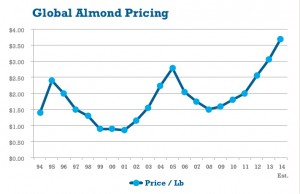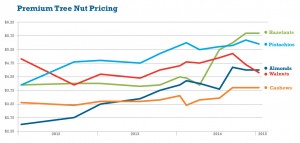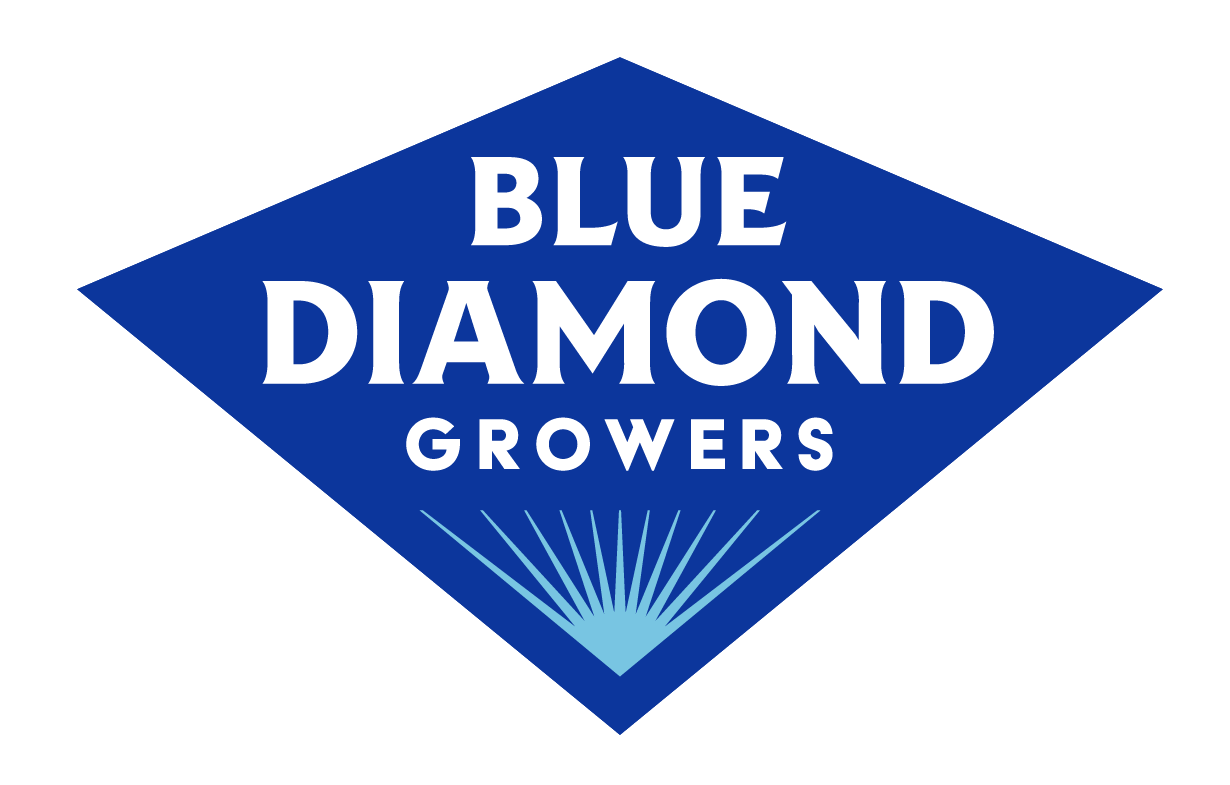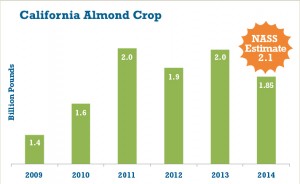Almond Prices: A New Normal
The spectacular and extended rise in almond prices has the industry concerned that we have reached the peak. Many of you have lived through rising and falling prices. You may even recall there has been a five-year pattern to almonds prices. As we enter the fifth year of rising prices, rather than avoid the elephant in the room, it is important the industry understand why this time is different.
The pricing cycles of previous decades were based primarily upon changes in supply. Bad blooms led to high prices, and increases in bearing acres, coupled with good blooms, led to declining prices. The last five years have been different. Demand has been the primary driver of pricing. While supply expectations influenced prices in the short term, the trend was consistently upward. Even the record 2 billion pound crops of 2011 and 2013 resulted in higher prices. Rising demand for almonds and new forms of almonds, driven by Blue Diamond marketing activities, have fully consumed even these large increases in supply. Demand, not supply, has driven prices for most of this decade.
 If demand is the key driver of this market, the question is whether almonds are still a value. Three years ago I shared the Warren Buffet quote, “Price is what you pay, value is what you get.” In looking at the other tree nuts, almonds are now much more appropriately priced, but they are still a value. As the healthiest, best tasting and most versatile tree nut, almonds have a uniquely strong demand.
If demand is the key driver of this market, the question is whether almonds are still a value. Three years ago I shared the Warren Buffet quote, “Price is what you pay, value is what you get.” In looking at the other tree nuts, almonds are now much more appropriately priced, but they are still a value. As the healthiest, best tasting and most versatile tree nut, almonds have a uniquely strong demand.
With the 2014 harvest, shortage of supply took over as the primary driver of market pricing. The yield on the 2014 crop was 12 percent below the National Agricultural Statistic Service expectation and was a statistical outlier from any forecasts based upon history. A convincingly good bloom and an apparently good crop in the trees translated into a harvest that caught the industry by surprise. The reason? This California drought is unprecedented. Most concerning is that the foreseeable future does not instill confidence in additional supply. I am writing this report in the middle of the driest January on record. Even if we are blessed with rain and snow in February and March, the 2015 crop will once again be small. UC Davis research indicates the greatest drought impact occurs in the year after the drought. If we are water constrained again this summer, we should similarly expect the 2016 crop to be small. The promise of greater groundwater regulation indicates water challenges and corresponding tight almond supply will dominate the industry expectations for the foreseeable future.
I trust almond growers will agree we are in unique times. There was an extraordinary rise in demand driven by Blue Diamond product innovation, brand-building advertising, and health messaging from the industry-funded Almond Board of California research programs. In appreciating the uniqueness of California’s current drought and water challenges, our future almond yield outlook is different. Tight supply will now dominate prices. Given that almonds still remain a value relative to other tree nuts, we are experiencing the new normal for almond prices.

